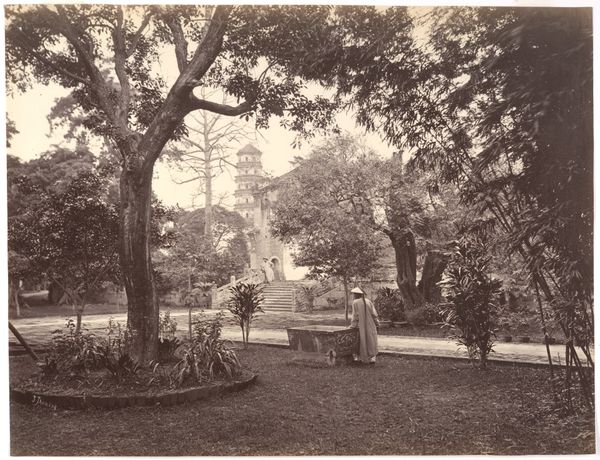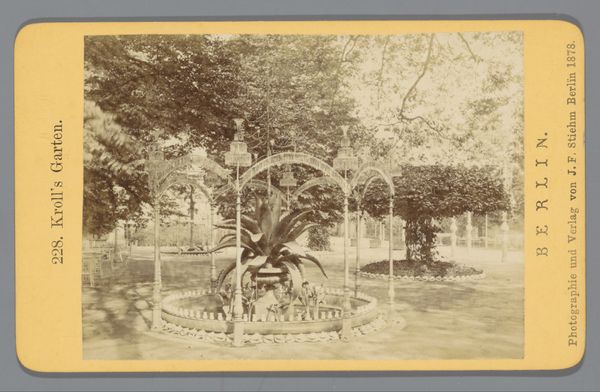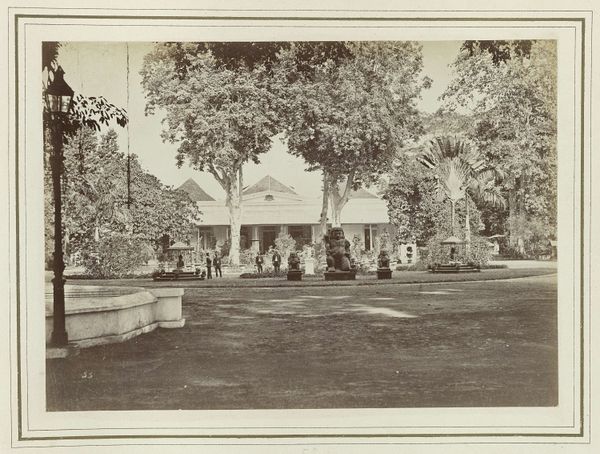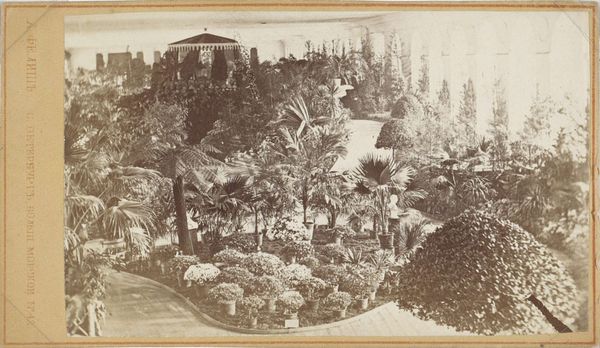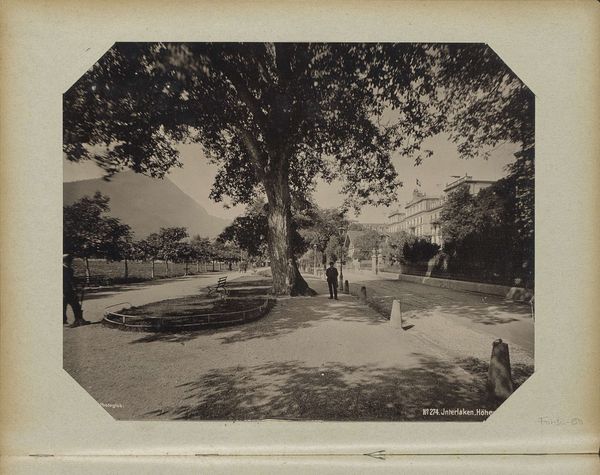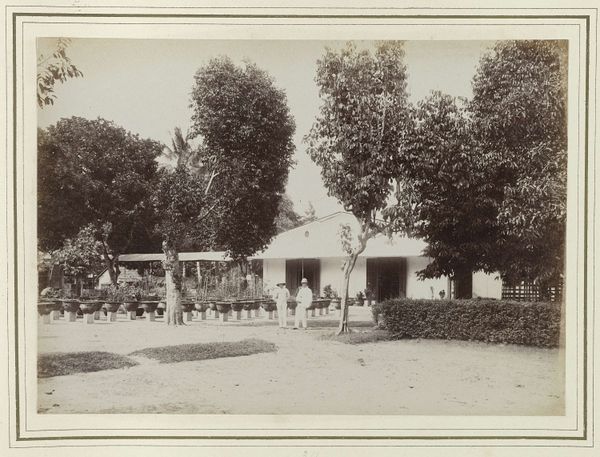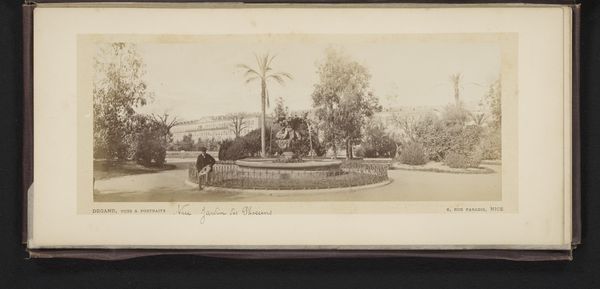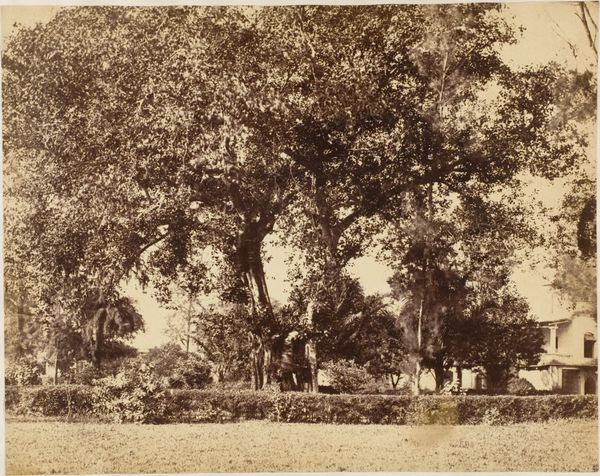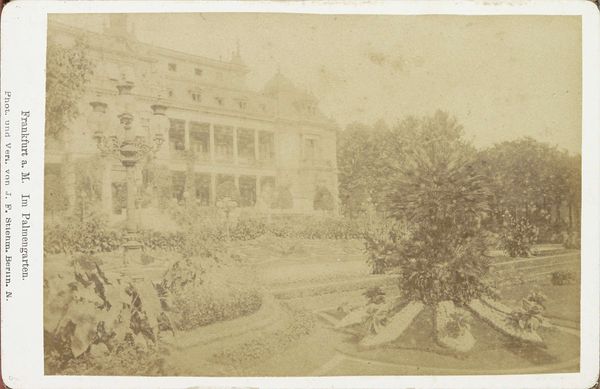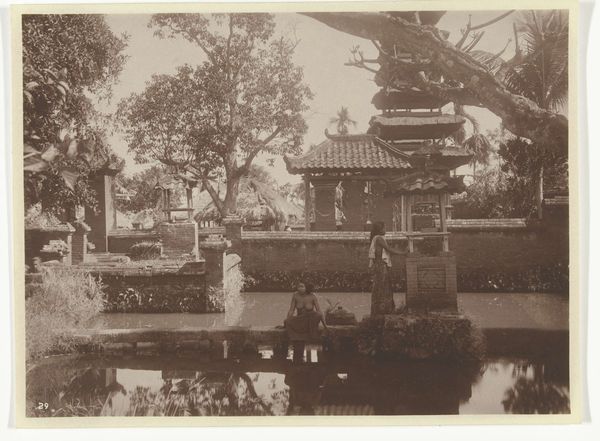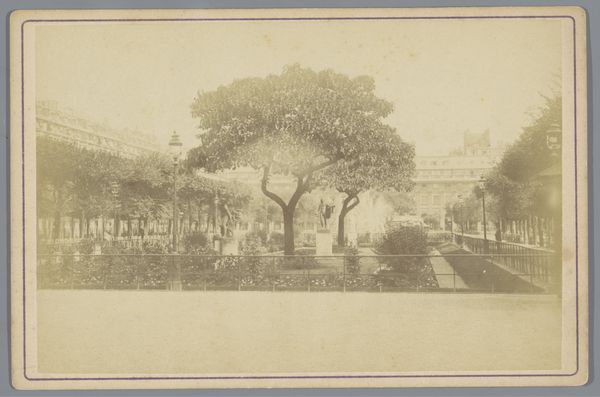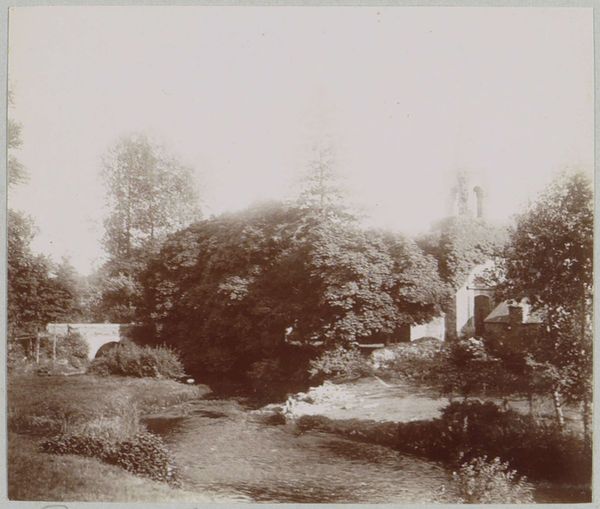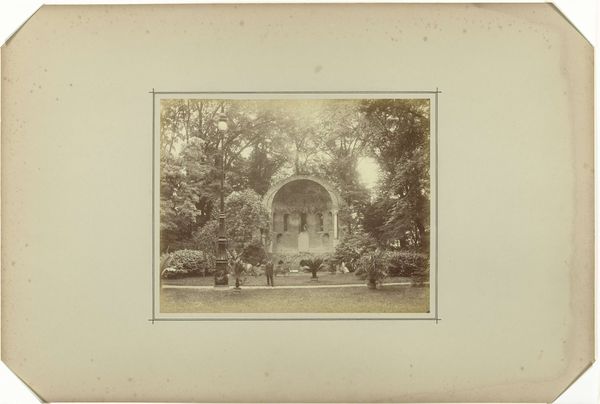
photography
#
pictorialism
#
landscape
#
photography
#
19th century
Dimensions: height 150 mm, width 210 mm
Copyright: Rijks Museum: Open Domain
Editor: This is Kassian Céphas' "Siertuin," a photograph from 1886 currently held at the Rijksmuseum. I’m immediately struck by the composition—the strong central pathway drawing my eye deep into the garden, creating a sense of depth. What elements stand out to you? Curator: The linear perspective certainly organizes the visual field, structuring the gaze towards the vanishing point. I also notice the tonal gradations across the photograph, how the subtle shifts in light and shadow define the forms of the vegetation. Observe the ornamental trim bordering the scene; it seems to mimic a proscenium arch. Editor: Yes, it does feel quite staged, almost theatrical! Are those elements intentional? Is that framing significant? Curator: Consider the very deliberate placement of the urns and pedestals – elements set precisely within the landscape. Notice, too, how the texture of the gravel path contrasts with the foliage, leading the eye while fragmenting into an overall gray tonality. The textures provide visual complexity within the composition. How do you believe this manipulation affects the artwork's meaning? Editor: I guess by adding such artificial, stylistic flourishes, it feels more like the *idea* of a garden, not just a captured landscape, really emphasizing its pictorial qualities? Curator: Precisely! This manipulation of form and texture underscores the artifice inherent in representation itself, challenging our perception of reality. Editor: That's really interesting! Focusing on these intrinsic qualities really unlocks a deeper understanding of the piece, even beyond the subject matter itself. Curator: Indeed. Through attention to structure, texture, and form, one can move toward an enriched interpretation.
Comments
No comments
Be the first to comment and join the conversation on the ultimate creative platform.
